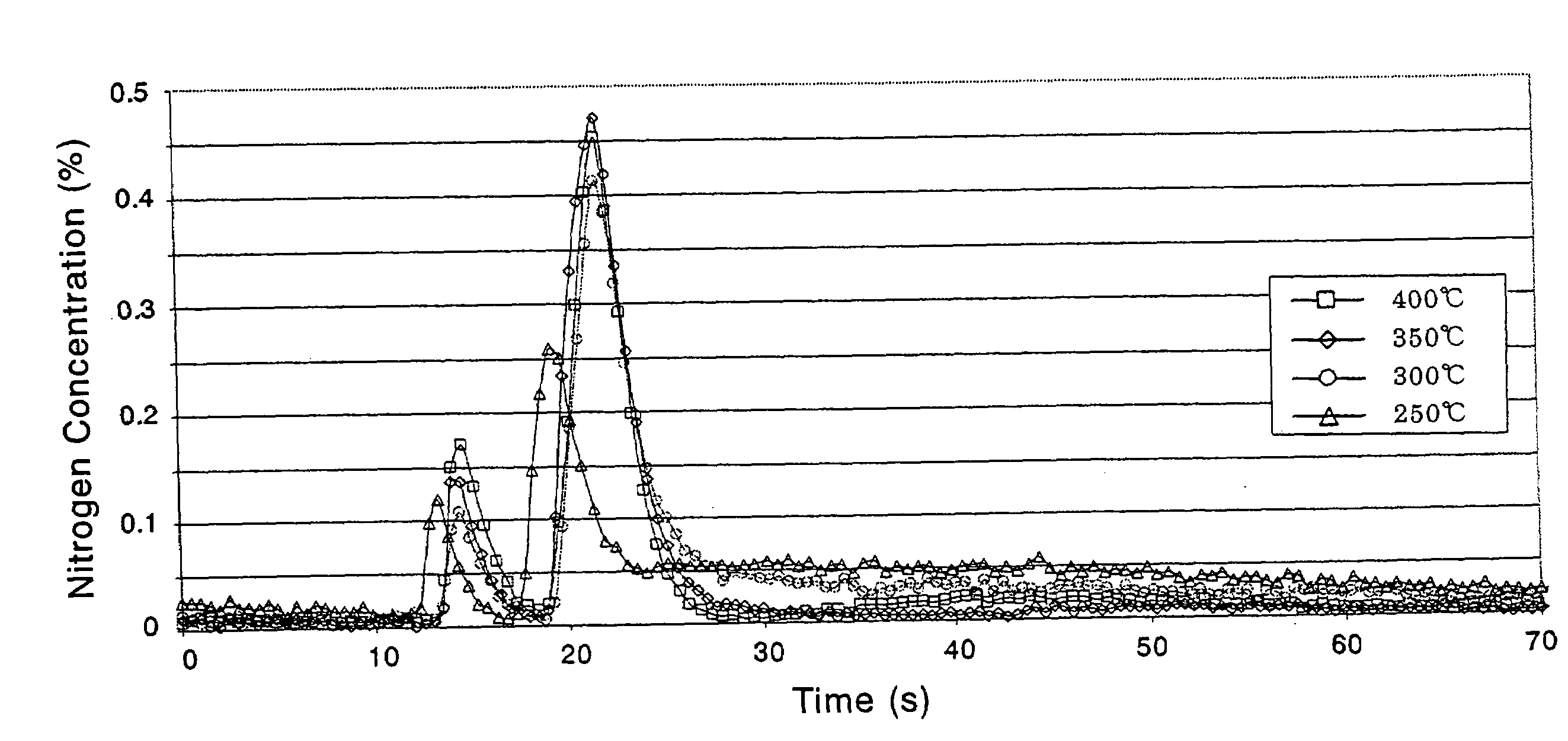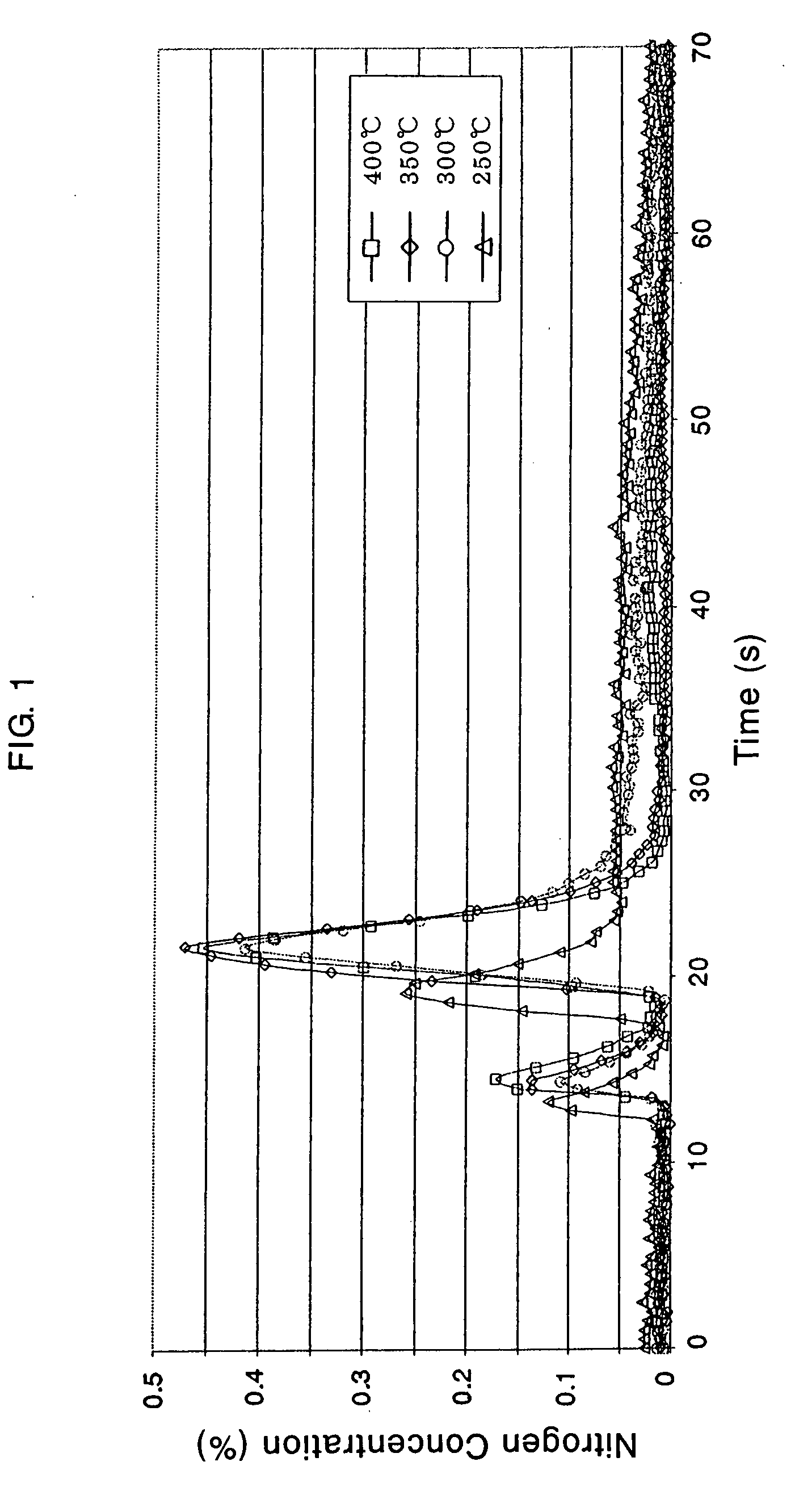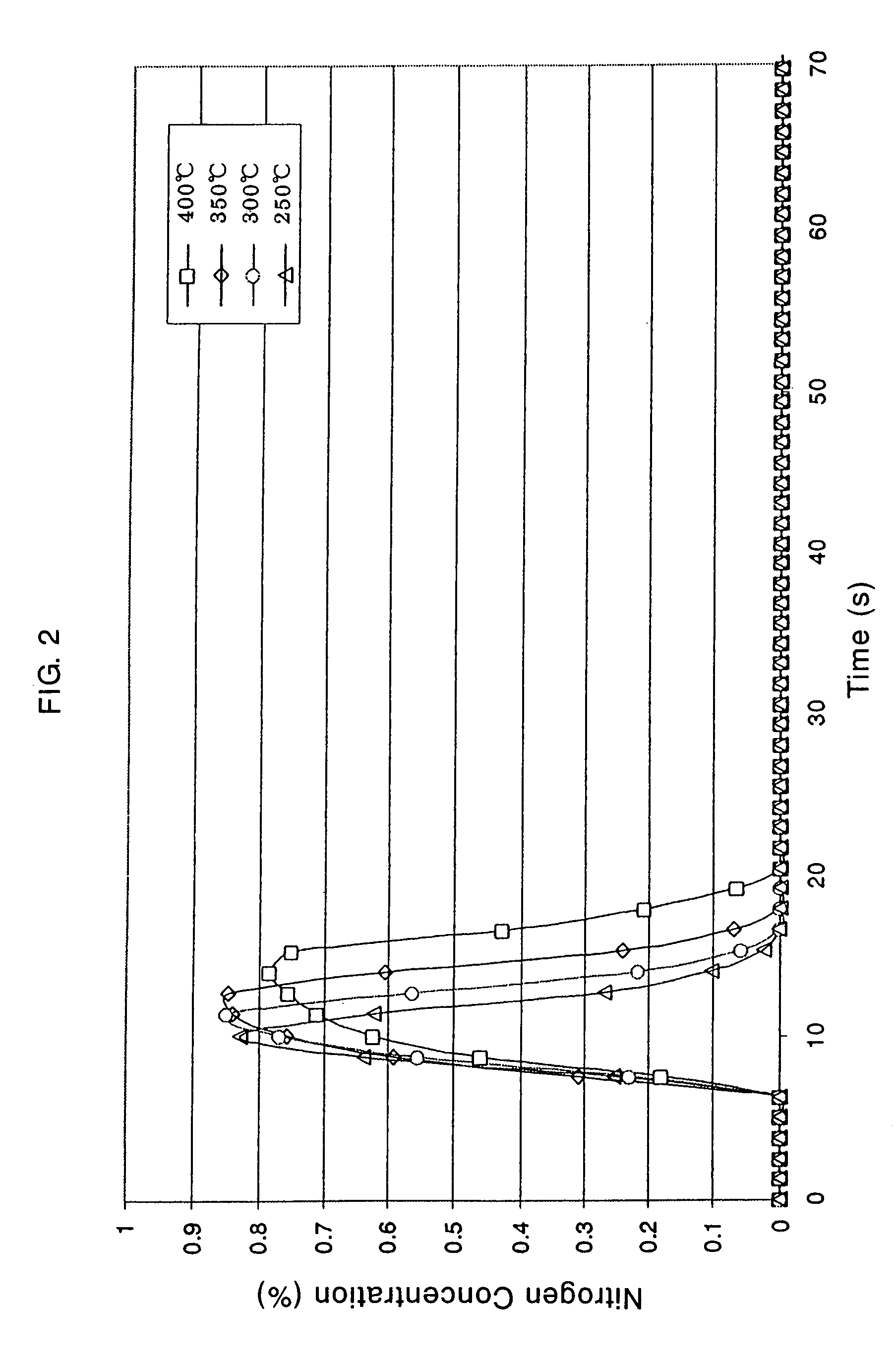Catalyst and Catalyst Structure for Reduction of Nitrogen Oxides, and Method for Catalytic Reduction of Nitrogen Oxides
a catalyst and nitrogen oxide technology, applied in physical/chemical process catalysts, metal/metal-oxide/metal-hydroxide catalysts, separation processes, etc., can solve the problems of remarkable fuel efficiency drop, deterioration of catalytic activity at low temperatures, and disadvantages of conventional methods, and achieve high durability
- Summary
- Abstract
- Description
- Claims
- Application Information
AI Technical Summary
Benefits of technology
Problems solved by technology
Method used
Image
Examples
preparation example 1
[0078]151.37 g of cerium nitrate (Ce(NO3)3.6H2O) was dissolved in 1000 ml of ion-exchanged water to prepare an aqueous solution. 0.1-N ammonia water was added to the aqueous solution to neutralize and hydrolyze the cerium ions, and the resulting slurry was aged for one hour. The product was separated from the slurry by filtering, dried at a temperature of 120° C. for 24 hours, and then calcined in the air at a temperature of 500° C. for three hours to obtain ceria powder (having a specific surface area of 138 m2 / g).
preparation example 2
[0079]164.31 g of cerium nitrate (Ce(NO3)336H2O) and 4.47 g of praseodymium nitrate (Pr(NO3)3.6H2O) were dissolved in 1000 ml of ion-exchanged water to prepare an aqueous solution. 0.1-N ammonia water was added to the aqueous solution to neutralize and hydrolyze the cerium salt and praseodymium salt, and the resulting slurry was aged for one hour. The resulting product was separated from the slurry by filtering, dried at a temperature of 120° C. for 24 hours, and then calcined in the air at a temperature of 500° C. for three hours to obtain ceria / praseodymium oxide composite oxide powder (having an oxide weight ratio of 95 / 5 and a specific surface area of 182 m2 / g).
preparation example 3
[0080]164.31 g of cerium nitrate (Ce(NO3)3.6H2O), 2.24 g of praseodymium nitrate (Pr(NO3)3.6H2O) and 3.98 g of lanthanum nitrate (La(NO3)3.6H2O) were dissolved in 1000 ml of ion-exchanged water to prepare an aqueous solution. 0.1-N ammonia water was added to the aqueous solution to neutralize and hydrolyze the cerium salt, praseodymium salt and lanthanum salt, and the resulting slurry was aged for one hour. The resulting product was separated from the slurry by filtering, dried at a temperature of 120° C. for 24 hours, and then calcined in the air at a temperature of 500° C. for three hours to obtain ceria / praseodymium oxide / lanthanum oxide composite oxide powder (having an oxide weight ratio of 95 / 2.5 / 2.5 and a specific surface area of 180 m2 / g).
PUM
| Property | Measurement | Unit |
|---|---|---|
| temperature | aaaaa | aaaaa |
| concentration | aaaaa | aaaaa |
| catalytic activity | aaaaa | aaaaa |
Abstract
Description
Claims
Application Information
 Login to View More
Login to View More - R&D
- Intellectual Property
- Life Sciences
- Materials
- Tech Scout
- Unparalleled Data Quality
- Higher Quality Content
- 60% Fewer Hallucinations
Browse by: Latest US Patents, China's latest patents, Technical Efficacy Thesaurus, Application Domain, Technology Topic, Popular Technical Reports.
© 2025 PatSnap. All rights reserved.Legal|Privacy policy|Modern Slavery Act Transparency Statement|Sitemap|About US| Contact US: help@patsnap.com



